We enjoyed another week of simple activities thanks to How Wee Learn. The activities this week were a mix of successful and not quite working for us, so we thought on the fly (pun intended) and created our own fun.
Day 1: Hexagons
We began with our story about Harriet the Honeybee, and we learned about her hive. Nature is truly amazing to have made this beehive shape. The first focus was on creating hexagons. After trying to do it origami style, with kite paper, and as recommended with construction paper strips (kind of boring!), I ultimately created our own craft printing a beehive.
For this craft, you need only some empty toilet paper rolls and yellow paint. Fold the toilet paper rolls in half, then fold the remaining piece in thirds. Make sure to press the creases of the fold extremely tight as the roll really wants to become round again when you open it.
When you open the roll, you should have a hexagon shape.
Squirt some yellow paint on a palette, give them some fresh paper, and enjoy the happy activity. My kids like washing the brushes and palettes as much as they like painting, so the activity always stretches into an hour or so for them.
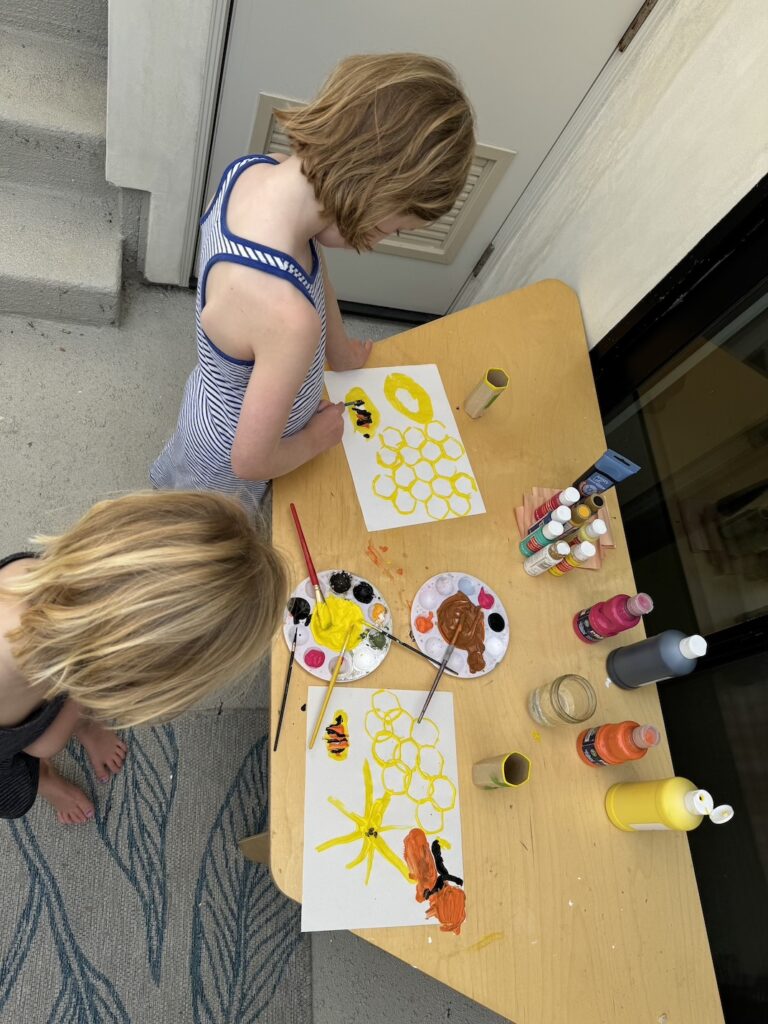
Day 2: Decoding
This was skill gamification at its best. They had NO idea we were doing a reading activity. For this day, we combined treasure hunting and a secret code. We reused our little treasures from last week (rocks with sequins glued on them), and we hid them around our house.
We then used the “bee code” to write a clue for where each treasure was hidden. After some decoding, the treasure hunter always had success. This lasted rounds and rounds, and of course the grandparents were treated to a hunt when they arrived. I loved watching them sound out words with thrill then run to find the treasure.
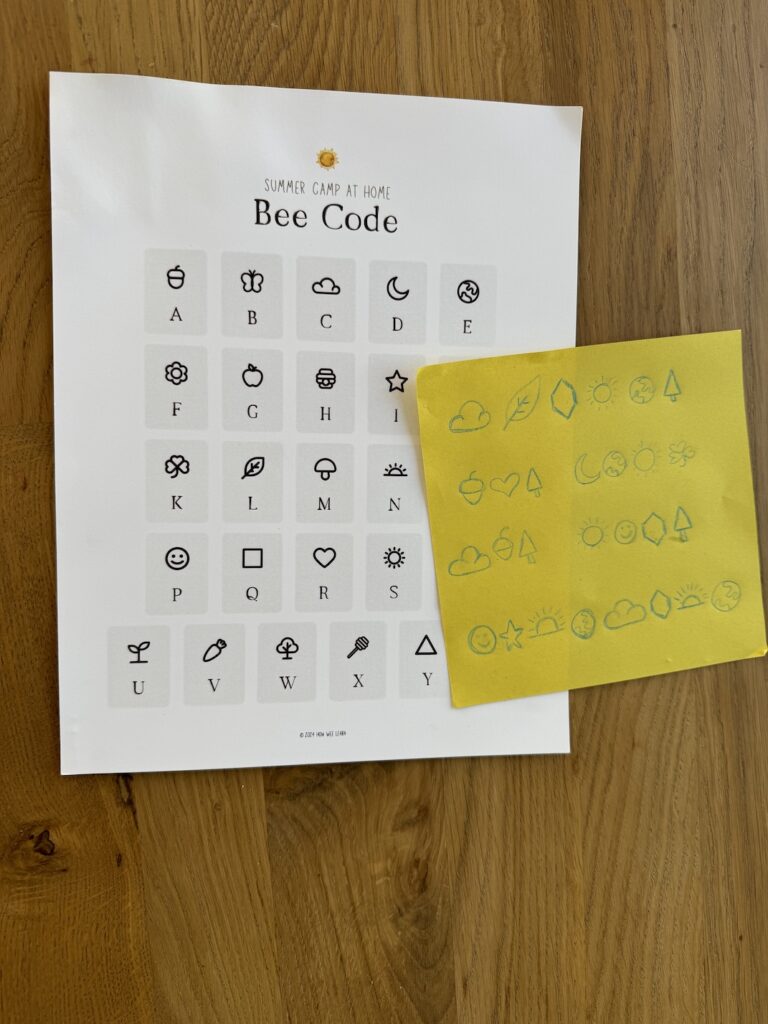
Day 3: Felted Bees
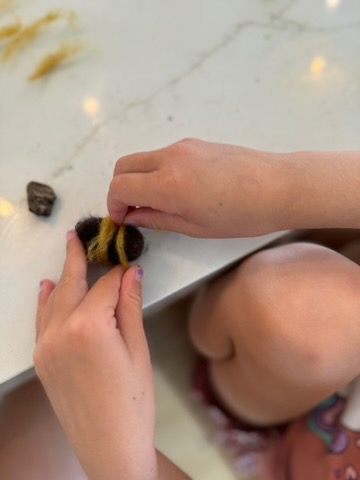

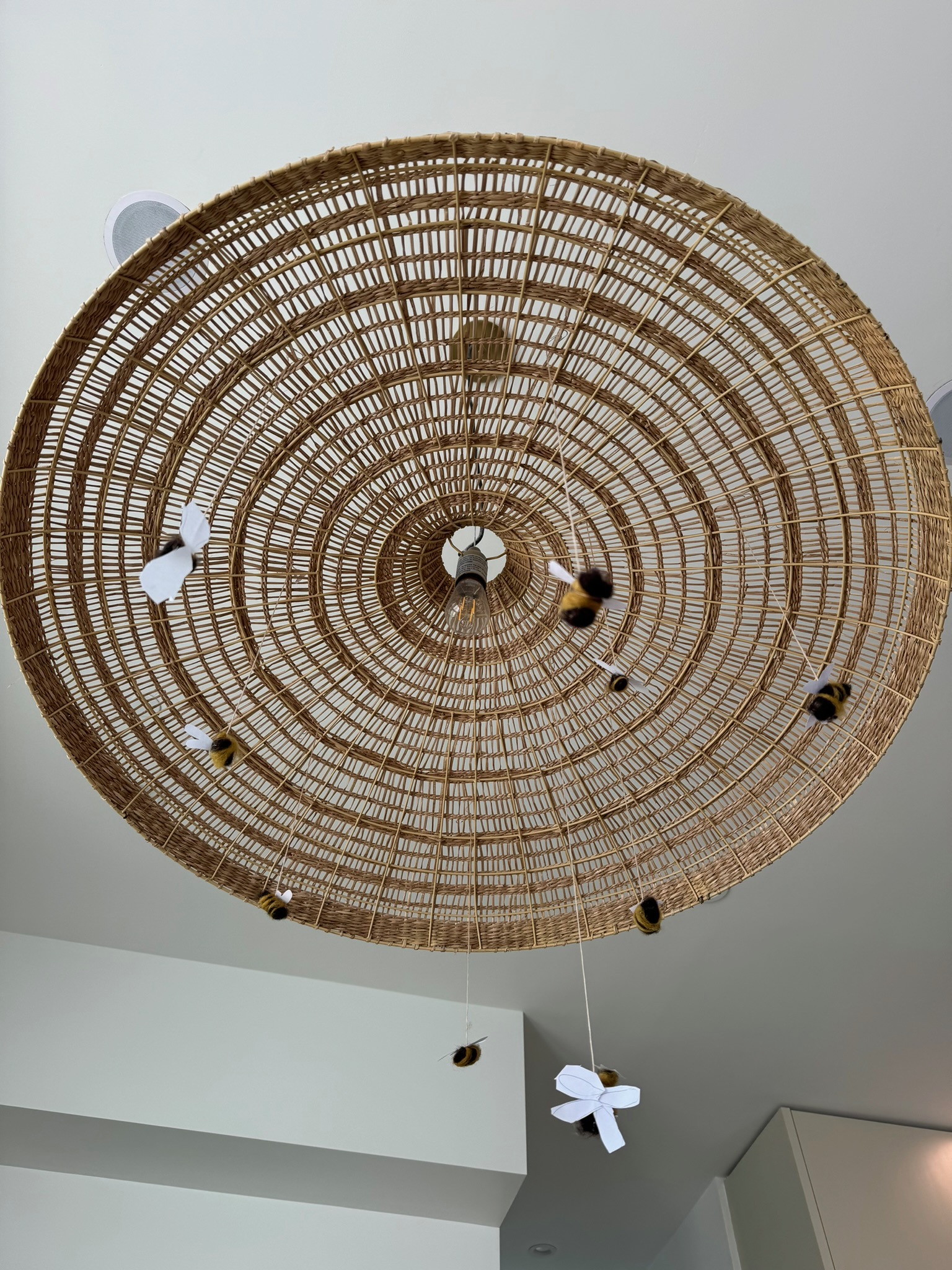
If you’re not a felter, have no fear. You can do this craft with or without felt. I’m a felter, so I was pumped to have a day to bring the girls in on a felt project.
Option 1 – Use a pine cone and weave simple yarn through it in black and white. It’s a great basic weaving skill, and you need minimal material for this. Bonus is you get to take a nature hunt for pine cones.
Option 2 – We chose to kick things up a little and felt our bees. We started with a beach walk to collect 1 inch long pieces of driftwood. There were so many to choose from!
It was fun to embrace both of my kids’ choices as one preferred to stay and swing while the other wanted to hunt, hunt, hunt with me. The joy of homeschooling is I can say “yes” to both.
We came home and tore some small pieces of black and gold wool from larger wool sections. We started with the black, layering it around a piece of driftwood several times. Then we added very thin yellow strips. We just tucked the wool in with a quick needling (hot glue works, too!), et voila.
My big kid didn’t want to help make any wings. We had learned that bees only have two wings compared to a butterfly’s four (this was part of a fun exercise where they met their first Venn diagram!). My little one got busy cutting. Then, she had the idea to make a crown and select one bee to be queen, et voila again as this brought my big kid right back into it.
We hung the finished bees from our dining chandelier to celebrate bee week.
Day 4: Bee hotel
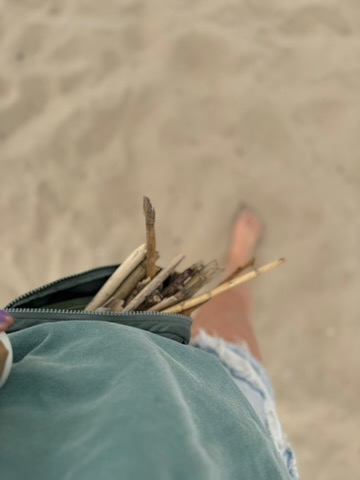
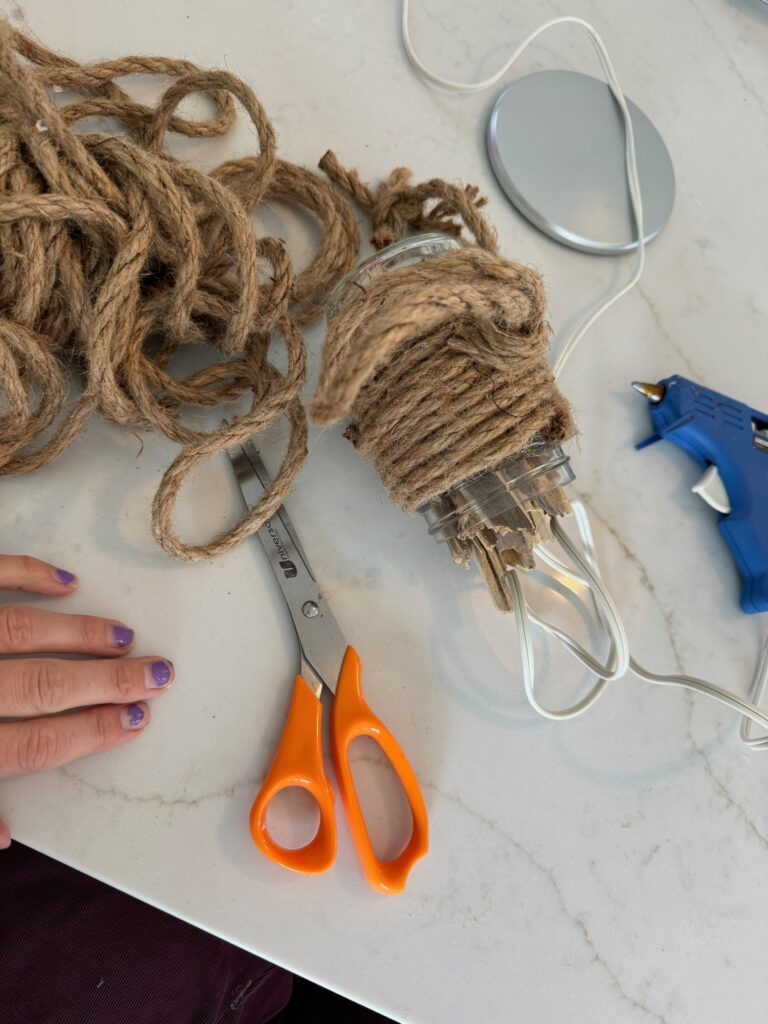

We skipped the chalk pollination exercise as this was something they’d done many times before. But, making a bee hotel was a new project for us. It was a fun day combing the beach again for the right reeds and sticks. I love our finished hotel, and my little one even wanted to add a penthouse with a little crown on top for the Queen .
What I enjoyed most about this week was the many questions we landed on.
Do roly poly’s molt? (yes)
What is “North America?” (Get out the globe! Compare it to the native lands maps!)
Do mason bees sting? (Only when stressed)